August
2019
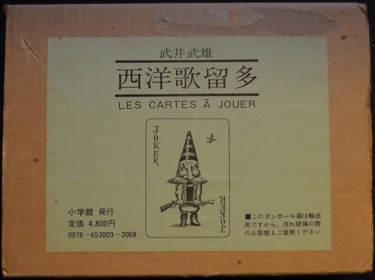 |
On Facebook you can find posts of video's in which
people open up packages with birthday presents, kitchen utensils and
even decks of playing cards. It's all done with much excitement and
enthusiasm. When the deck passed through my hands last week it reminded
me of our own excitement when we first opened this item, going through
the LB collection last year. But this is not Facebook, so no video but a
series of photo's that will hopefully arouse some excitement in you too. |
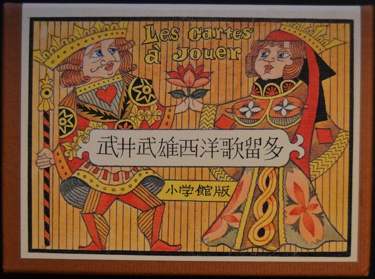 |
|
The carton protective sleeve. |
|
The first box that was pushed out. |
|
Side of 1st box. |
When that box is
folded open, it reveals a second (leather coated) box for a double deck. |
 |
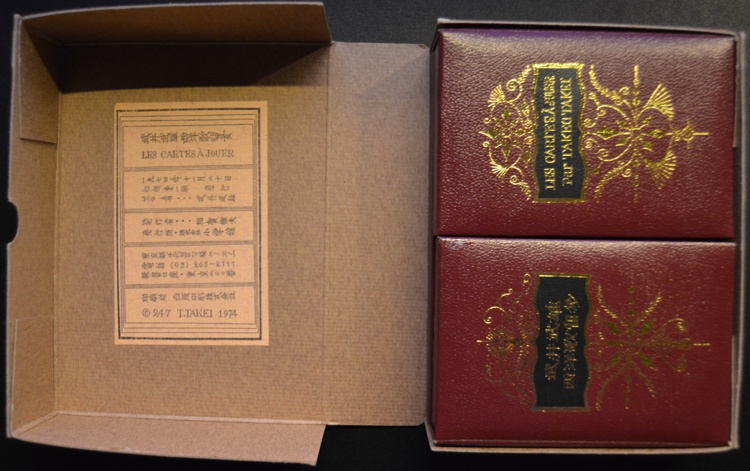
|
Taking out the box,
it turns out to be rather thick.
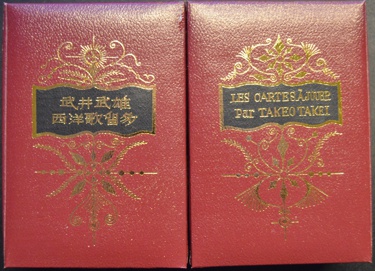
And not
without reason. It can be folded open, revealing two decks and a paper
booklet.

A bridge score pad?
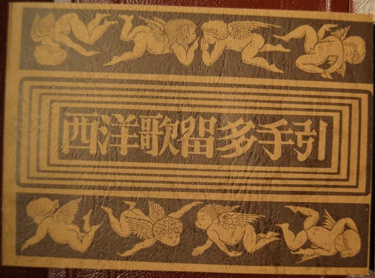
No, the Japanese
characters on the cover are the title of a booklet with 157 pages in Japanese.
Fortunately the title was translated into French. "Petite Histoire des
Cartes à Jouer" (Short History of Playing Cards).
A lot of text pages in Japanese, but a couple of pages have b/w illustrations
and there are even a few pages in full color.
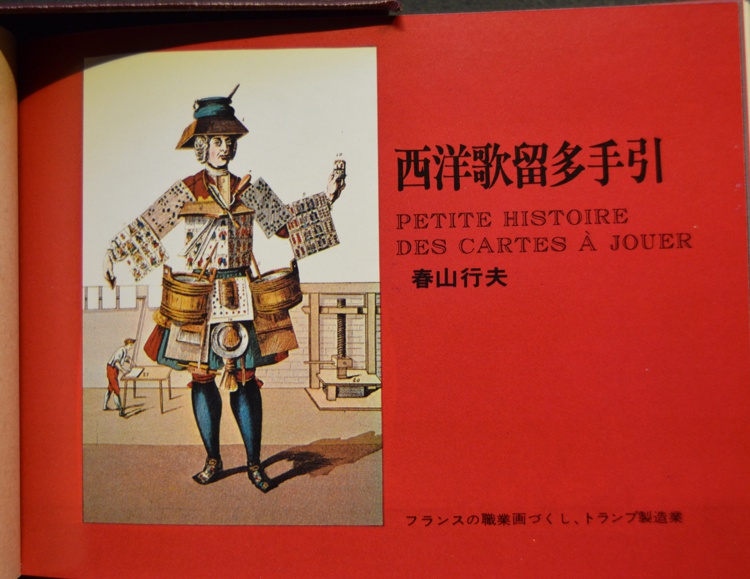
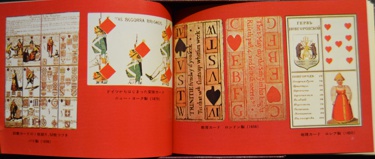
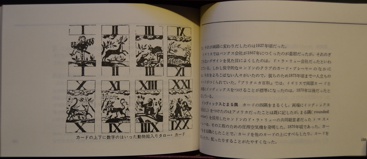
But of course the
most important content are the two decks, that can be slid out at the sides of
the opened box.
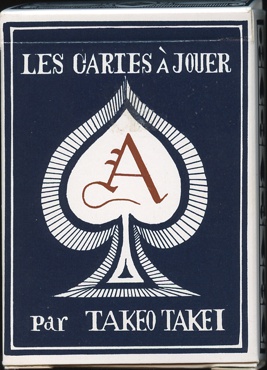
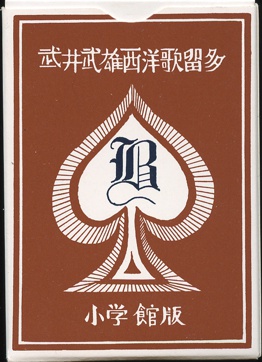
So much for the
opening ritual. By now you must have guessed that the title of this edition is
"Les Cartes à Jouer" and that the Japanese artist Takeo Takei (1894 -
1983) has
designed the decks and box. It was published in 1974 and printed by the Angel
Playing Cards Co. from Osaka, Japan. Looking at the boxes it's apparent that
they are bilingual. The front is in Japanese, the back in French. The boxes are
in blue and brown, which is not unusual, but there's an A and a B on both sides.
What we hoped became true: there are two different designed decks. I'll show
them both here.
Deck A has a
single figure pattern. It seems that the artist has studied old French patterns
and made his own interpretation. And he has introduced two "aliens" in
his fantasized French pattern: the Queen of Spades looks rather Indian and the
head of the Jack of Clubs has Asian, probably Japanese, features.
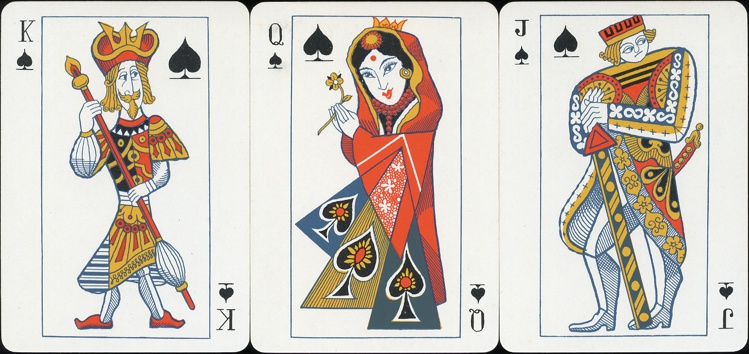
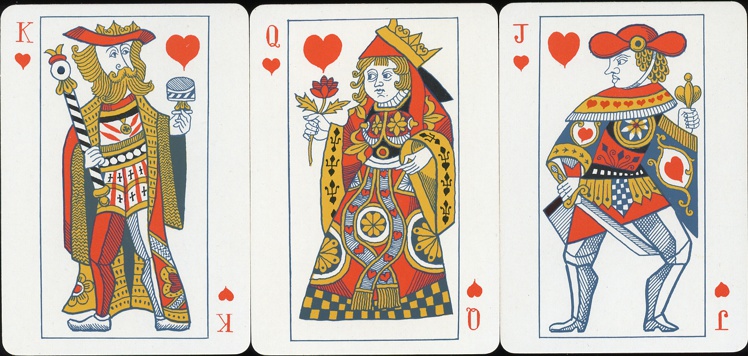
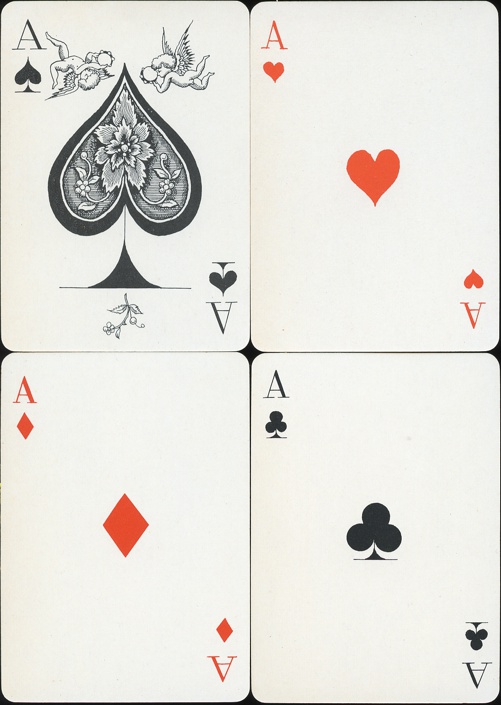
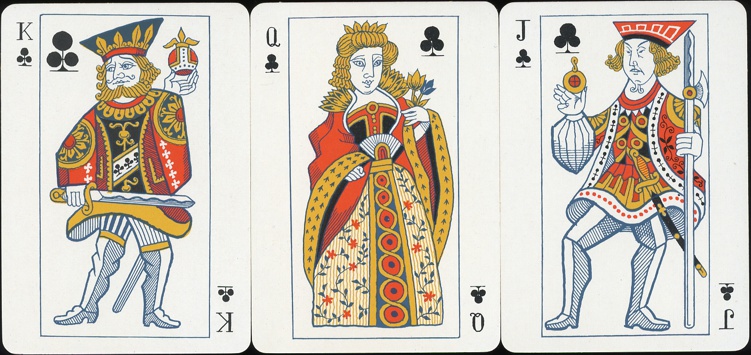
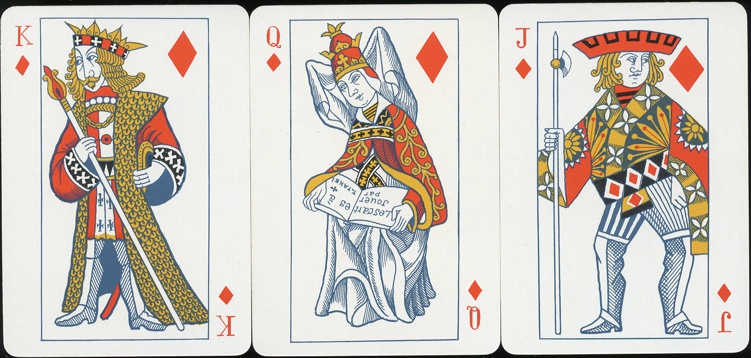
The title and
artist are also to be found on the lap of the Queen of Diamonds.
Here below the jokers from deck A, with blue back.
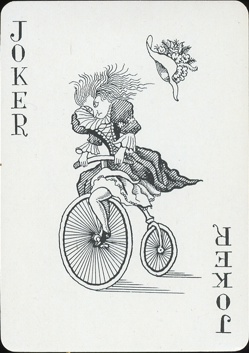
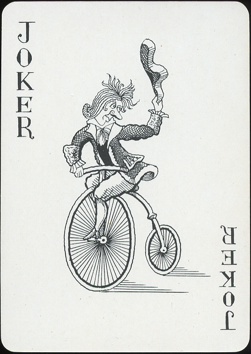
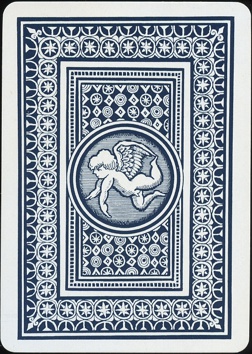

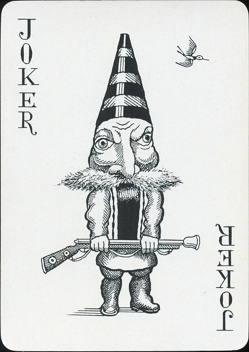
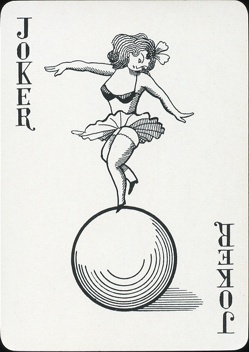
The jokers from deck
B, with brown back (falling angel).
Deck B shows a
fantasy double image pattern, in a sort of French style. With the exception of
the diamond suit, the name IKQA appears in each suit and on the ace of
spades. I've tried to find out what this could mean, but haven't found an
answer. So if there's anyone with an answer...... don't hesitate to send me an
email.
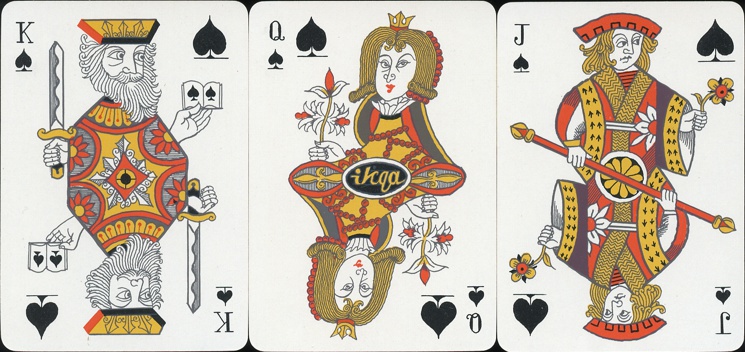
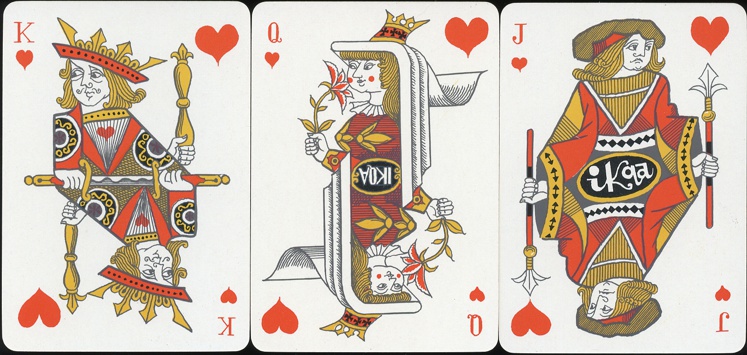
Only the ace of
spades is different in deck B. The other aces are the same as in deck A, plain.
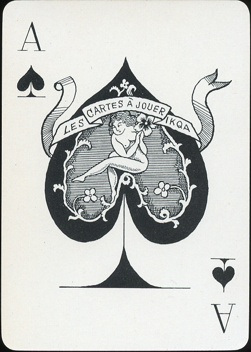
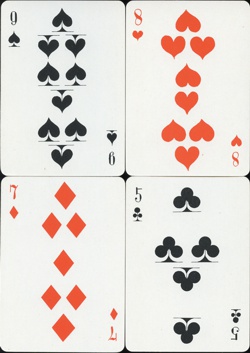
On the pip cards
in both decks the pips are placed in an unusual manner.
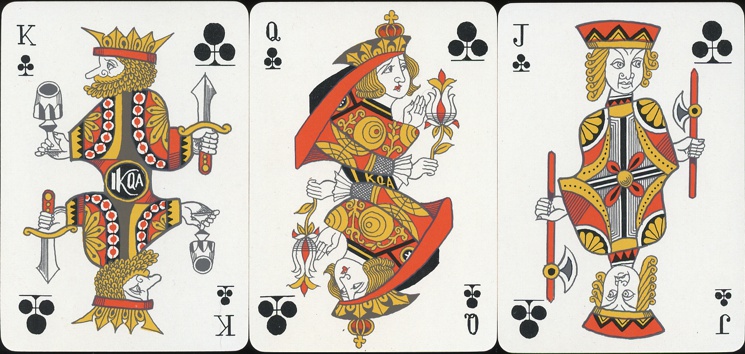
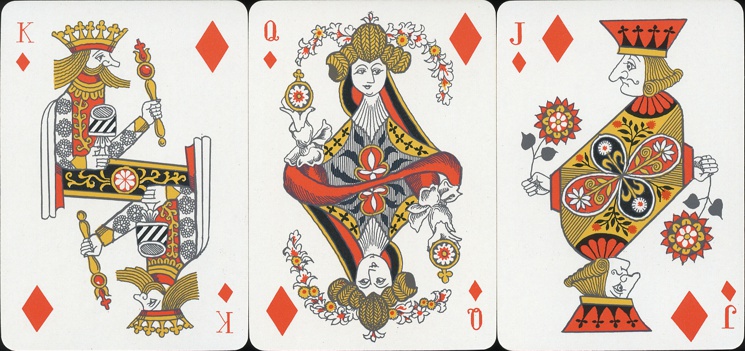
BACK
TO PRESENT MONTH




























